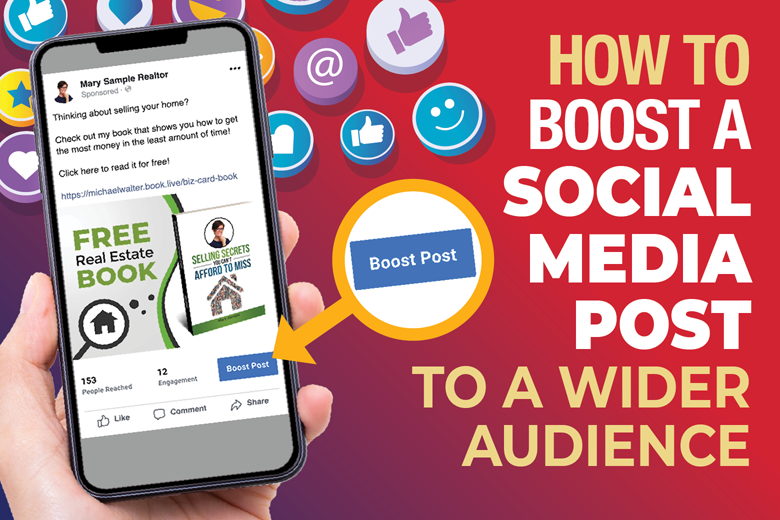
How To Craft The Perfect Professional Biography
As a real estate agent, you do a lot of marketing. You market your listings, you market your business, and most importantly, you market yourself.
One of the best ways to do that is by creating a bio that represents who you are and how you want potential customers to see you.
But if you don’t consider yourself a great writer — or if you simply don’t know what to say — you can get a serious case of writer’s block when it comes time to actually write one.
In this training article, I want to talk to you about the different types of bios, walk you through a simple writing process to get your creative juices flowing, and provide you with easy-to-edit templates you can use for your own business.
But first, let’s talk about why bios are so important in real estate.
Why do I need a bio?
Your bio is one of the first things potential clients see online when they’re searching for an agent, alongside your client reviews and listing stats. Make a great first impression, and you could easily land listing appointments. Fail to impress, and people will keep on scrolling.
Your bio can appear in a number of places, both online and in print:
As important as your bio is, you have to make sure you’re saying what you want to say, exactly how you want to say it.
What do you want to say?
There are different types of bios that work for different platforms and different types of businesses.
In fact, you may need different bios to appeal to different audiences.
Establish how you want to be seen, and you’ll be able to decide what type of bio works best for your business or will reach each type of client you’re trying to reach.
Standard/Professional Bio
This is probably the most frequently used type of bio. It discusses your career accomplishments, talks about your strengths, and gives readers a little taste of your life outside the office, without getting into too much detail.
This is probably the type of bio you’ll want to to appear on your broker’s website and maybe on sites like Zillow and Realtor.com. It’s straight to the point and builds a strong impression of what you can do as an agent.
You can use this template to write a simple, professional bio. Simply fill in your information anywhere that’s highlighted in yellow, and expand on it anyway you’d like. You can find this template and the others in this article inside the Book Builder App and customize them to include in your book.
List of Accomplishments
This type of bio is pretty similar to the standard/professional bio, but it puts your accomplishments at the forefront.
Showing off your accomplishments in a bulleted list, rather than discussing them in detail, is ideal for social media platforms and third-party real estate websites, where people quickly browse and don’t want to read long paragraphs.
Use this template, and fill in your own accomplishments. If you’re new to real estate and haven’t built up a solid list of credentials, you can use this kind of bio to list your strengths and talk about what you can do for your clients.Informal Bio
Straying from the last two formats, this bio is meant to show off your personality and give potential clients an idea of the type of person you are. You want to show them that working with you will be a stress-free experience and that you’ll be able to relate to them on a human level.
These bios can be a little bit more challenging to write because you have more creative license to go in any direction you want. We’ve provided a template to give you just one example of how to write an informal bio.
Talk about your childhood goals and aspirations — and how you still apply those same ideals in your business — or share a little bit about your hobbies or family life that tie into your career.
You still want to include information about your professional qualifications and accomplishments, but you don’t want to shove them down the reader’s throat. There should be a natural transition between the less formal and more formal parts of this bio.
This type of bio, as well as the next bio on this list, are perfect for your personal website, social media platforms and to include inside your book.
Storytelling BioLike the informal bio, the point of this bio is to help potential clients relate to you on a personal level. But in order to do that, you start out with a personal or professional story that does one or all of the following:
We’ve included a template for this bio, too, but you’ll need to really personalize it to make it work for you.
How do I get started?
If you don’t want to use one of these templates and would prefer to “start from scratch,” I’m here to help you get past your writer’s block.
Sometimes, the best way to start writing is to interview yourself.
That might sound silly, but answering questions is a great way to form the basis of your bio.
Here are some questions to answer (feel free to come up with more of your own):
Enhancing Your Book
Including a bio inside your book is just one more way to really make it yours. Yes, your name and face appear on the front, but including more information about yourself and your career can help readers gain a more solid connection with you as an agent.
A Few Loose Ends
Including a bio inside your book is just one more way to really make it yours. Yes, your name and face appear on the front, but including more information about yourself and your career can help readers gain a more solid connection with you as an agent.
1. Once you finish writing, walk away for a day or two.
It’s easy to gloss over mistakes or get stuck in a rut when you’ve been staring at the same words for hours on end. Sometimes, the best thing to do is to take a break to refresh your mind
When you come back to your work, you’ll be able to look at it with a fresh set of eyes and make changes to improve what you wrote before.
2. Cross your t’s and dot your i’s.
Every bio should make you look your best. That’s a given. But does yours accomplish that?
Susan Greene, a professional copywriter, gives tips on how to evaluate your work.
Consider these questions. Does your bio…
If you’ve answered yes to all of these questions, chances are, your bio is just about ready to go. If not, you may need to go back and expand on certain areas or change sections that may not be giving off the impression you’d hoped.
3. Have it proofread.
A sloppy bio, with grammar and spelling mistakes, reflects poorly upon you and your business. If you know a teacher, writer, or editor, ask him or her to read through your bio and flag any issues.
If you don’t have access to a friend or family member with proofreading skills, you can easily find a freelance proofreader on websites like Upwork and Fiverr. Simply post your project description, and wait for freelance editors to respond.
You can set your desired price and describe the scope of the project, then hire a freelancer based on the ratings and profiles of the editors who respond.
4. Test it out.
If you have a solid group of former clients you still keep in touch with, ask them to review your work and give any feedback.
The biggest question they should answer is this: If they saw your bio online, would they want to hire you?
Try to find people who are willing to be honest and not just tell you what you want to hear.
If you have trouble finding clients to review your work, you can offer incentives like a gift card giveaway or tickets to a local sporting event.
Want our team to write a bio for you?
Let one of our writers craft a custom bio for you. We’ll put you in touch with a writer who will ask targeted questions to find out who you are and what makes you different. Your writer will put together a bio draft for review. You’ll then be able to review what was written and make any edits. Finally, add your bio to your book in the Book Builder App, or we’ll do it for you.

